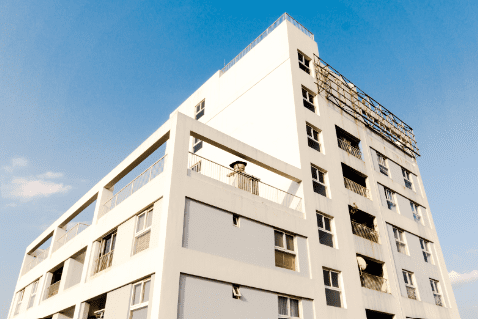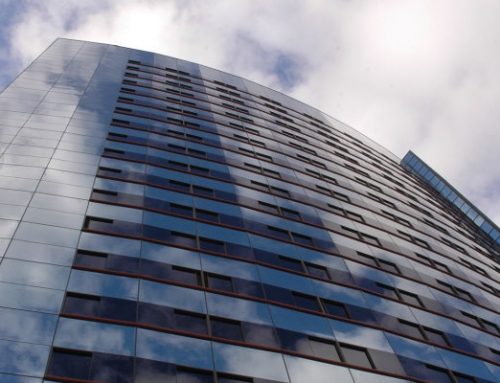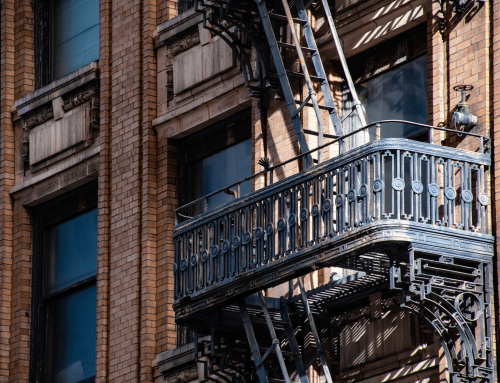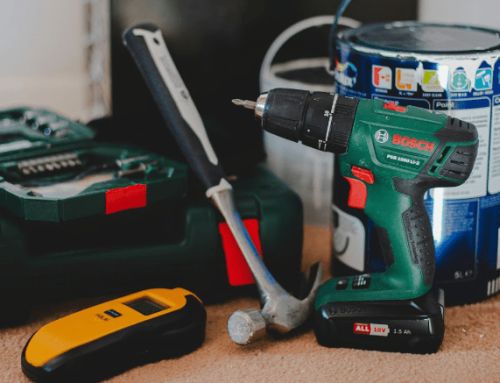Building insurance may seem like a big task. There are several properties housed in one structure, common areas, and various resident categories to take into account.
Fortunately, setting up this kind of insurance is not too difficult. It is your duty as the freeholder of a building or as a representative of a property management firm to obtain insurance for your building.
An insurance policy for a block of apartments accounts for the extra risks associated with having several leasehold properties in one building.
It’s estimated more than a million UK landlords don’t have the right type of flats insurance cover. Without this block of flats insurance, you can run into high costs further down the line.
In this guide, we’ll explain the processes of flats building insurance and flats insurance claims.
What is block of flats insurance?
Buildings insurance is often the main focus of insurance for a complex of apartments. This serves as a cover for the property’s actual structure. It’s possible that the leases on your apartments mandate that you insure against this minimum level of building damage and then charge a service fee to cover the loss.
Specifically, a flats insurance policy will be needed before mortgage lenders for individual tenants can approve a loan for any of the apartments. However, block of flat insurance is far more complex than a typical house insurance policy.
Block insurance considerations
You should resist the urge to purchase normal home insurance even though the building is a converted house. To begin with, your insurance must be aware of the apartments’ occupancy.
Unoccupied apartments are typically most vulnerable to costly claims because hazards such as leaks may go undetected until substantial damage has been done. There’s also a greater chance of burglary.
Then there are other tenant categories to take into account; for instance, students are frequently viewed as posing a greater risk to insurance. However, landlord insurance is meant to cover just these kinds of circumstances, so you don’t have to worry about them.
Even if there are many different kinds of property and occupancy, it’s crucial to be clear with your insurer so they can offer you the right coverage at the right cost. While some dangers are typically not a concern, they still need to be mentioned, so be sure to be honest about anything you believe to be significant.
Insurance for a block of apartments may also include a number of extras, like legal, landlord home emergency, and public liability protection.
How to make a claim for block insurance
In your capacity as a property manager, you are accountable to the owner for nearly all facets of a rented property or portfolio of properties, from establishing rent and finding tenants to resolving maintenance concerns and handling financial matters.
All of those responsibilities obviously come with risk, and when anything goes wrong, whether it be property damage, tenant injury, or client financial losses, having the proper property management insurance in place is essential to preventing unplanned expenditures and safeguarding your livelihood.
Here’s our step-by-step guide to making a claim to insurance providers:
Is the claim worthwhile?
The first step for property owners in filing an insurance claim is to determine if it is worthwhile to file a claim. There’s a number of insurance contracts with the excess to think about. The portion that you have to pay for yourself is the excess.
In addition, reinstatement value—which the insurance companies will cover—must be taken into account by claimants. A leak in the ceiling is one example of this. The expense of restoring the ceiling and looking into the leak will be paid for by the insurance claim; however, the leak itself will not be.
It’s important to keep in mind that if you decide to renew the policy, either the excess or your insurance price may go up.
Next steps
When you’ve determined that it’s worthwhile to pursue a flats building insurance claim, you need to make sure the right procedures are taken:
- To initiate a new claim, you need to get in touch with your insurer and block property manager if you have one. They will give you a claim number that you can use moving forward.
- For buildings insurance, you need to obtain at least two quotes for fixing the incident’s damages. To move further, these quotes must be submitted to the insurers for approval.
- To prove to the insurers that the job has been finished, you must next take pictures of the finished repairs.
- The insurers will pay the contractor’s invoice if they are satisfied that the work has been finished and the claimant is happy with the work.
Tips for a successful claim
- As soon as possible after the incident, file the claim. Certain policies contain a deadline for filing claims after an incident occurs.
- Record everything that happens. Try your best to document the incident(s)’ precise timings and dates. This covers contractor visits as well as any communications with the insurance providers.
- Employ trustworthy contractors. It is necessary for you to personally approve of the repairs and maintenance work. Make sure the contractors you choose are reliable and have worked on comparable projects. Any future work will not be covered by the insurance claim.
Looking for reputable block insurance?
We hope you never have to file an insurance claim, but if you follow the above guidelines, it may be a rather stress-free process.
At Scanlans, we recognise how crucial insurance services are to our clients’ complete protection of their interests. We will manage insurance policies for buildings, contents of common areas, employer’s responsibility, plant machinery, directors’ and officers’ liabilities, and public liability. We are registered with the FSA.
Our tight collaboration with several insurance brokers guarantees the acquisition of competitive rates and flats insurance comparison, which are reviewed annually.
Our block management services cover everything from insurance and claims to repairs and maintenance, building surveying services, site visits, and more.
For more information about our services, or to get a quote, contact us today.
Block insurance claims FAQs
What does buildings insurance cover in a block of flats?
Buildings insurance pays for the expense of repairing your home in the event of an occurrence like a fire, flood or storm, whether it’s for a house or a flat. It includes any permanent fixtures and fittings, such as fitted kitchens and bathrooms, as well as the framework of your property, including the floors and walls.
Who insures a block of flats?
Sometimes the freeholder or residents association appoints a managing agent to oversee day-to-day property management, including block insurance cover arrangements, in a block of apartments. The person who arranges the buildings insurance for a landlord who is also the freeholder if you are renting an apartment from them will probably be them or their managing agency.
How does block insurance work?
Property owners are protected with a block policy. Most significantly, in the event of a “total loss,” as defined by insurers, it can help cover the cost of rebuilding the property as well as the cost of repairs in the event that it is damaged.









